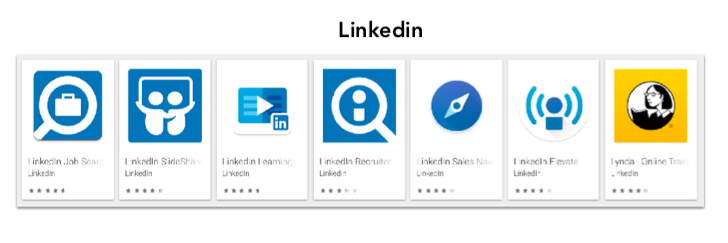Multi-App Strategy and why Banks Should Adopt This Approach
2019-01-24 10:02:04.233267


It’s been over five years since Fred Willson coined the term “App Constellation”, it was just when Facebook unbundled its messaging app. However, while this strategy has gained adoption and momentum, it’s still an open question as to whether this approach is a successful one.
The basic idea behind “App Constellations” is that, in mobile, well-established companies tend to launch portfolios of apps, rather than a single “all-in-one” product. Fast-forwarding in 2019, we see that the unbundling norm is here to stay!
That’s why we decided to do the legwork for you, with a few examples along the way. So, it’s worth exploring a few of the underlying rationales, behind an “App Constellation” methodology, and thus the appropriate measures of its success.
Unbundling simply means breaking apart the individual features or functionality of an app and offering those as entirely separate apps. For example, Linkedin building a standalone Job search app also seems to have worked well. You can still search and apply for jobs in their flagship app, but why not cut out the noisy updates from your connections if finding a new job is your main objective.

When in doubt check what companies with billions of data points are strategically executing. Similarities to a banking business is the single sign on, a unified customer view and of course a mobile first business model!
Banks are responding to the unbundling challenge by rebundling Fintech. This is important as the unbundling idea assumes that customers who are frightened of money will be happy to deal with an unknown Fintech start-up for A; a different unknown start-up for B; and another for C. In fact, if you look at the range of financial products the average customer owns - deposit account, car loan, mortgage, credit card, savings, investments, pensions etc. So, banks are adapting and changing thanks to absorbing the disruptive movements.
The new open banking environment allows consumers and SMEs to authorize third parties to access their account information through open application programming interfaces (APIs). When Google Maps opened its APIs to developers, it created an explosion of new applications.
However, banking is undergoing rapid changes over the last five years, leaving banks with multiple mobile properties.
Execution #1

Execution #2

Execution #3

Execution #4

Financial apps are among the top 4 apps in every consumer downloads in their mobile device.
Four keys Consumer Segments
To maximize their investments in mobile banking, banks should first understand the unique requirements of four key consumer segments - each with their own levels of maturity and comfort - then create a strategic plan that delivers on near-term customer acquisition and retention while driving innovation in today’s rapidly changing digital channels.
1. Consumer Profile: Profile data are collected through basket analytics and direct marketing campaign consumer response.
2. Behavior: Behaviour and interests are deducted through text mining on content consumption and frequency of interactions.
3. Business Segments: Business segmentation is classification of data points on classes that involve customer value segmentation.
4. Location Data: Location data are collected through the SDK and clustering algorithms can deduct if the customer is near a store, at work or at home.
The key learning for banks is that they need to provide the same agile environment for their own developers. Banks may fail if they try and create this environment at the edges of their business. If the edge is agile, but the core is “calcified” and “monolithic”, the projects at the edges eventually wither and die due to the difficulty and cost of accessing core resources and the immense burden caused by small changes. Banks need to drive innovation first at the core and then the edges. A few years ago, we were talking about when, not if.
When?
Acquisition: You acquire an app to reach out to a new audience, or bring in talent and knowhow. Acquire a startup or an established company, or even have a pre-existing killer app. For example, what Facebook did with Instagram.

Strategy: Strategically choose to un un-bloat your mobile experience, especially if you have different stakeholders using the app (eg Amazon Consumer-Seller).

New Opportunities: Test an assumption, agile execute an MVP etc. Examples of this unbundling approach are Twitter & Periscope.

Multi Apps Approach
To deliver the best app experience, help users accomplish a single mission easily and quickly by avoiding the “one app to rule them all” approach. ‘’Cluttering an app’’ with too many features may leave consumers overwhelmed and frustrated, and is often the top reason that users stop using an app altogether.
Furthermore, a multi-app approach benefits both the users and developers by keeping applications ‘’light’’. If an application is ‘’light’’, it can be updated more quickly to better serve users in the fast-changing mobile landscape.
The world of mobile banking is an ever-expanding one, and you can bet that consumer demand will drive its future. You can also count on tech-focused banks to invest heavily in improving their products. We see an open banking ecosystem, with a number of different players participating and jostling to provide customers with the services (financial and not) that they need and value. This approach would allow banks to address the both agility and innovation along with simplification and efficiency agendas.
2023-11-24 13:51:05.381822
2023-11-22 10:45:39.221862
2023-11-22 10:42:09.751804
2023-11-22 10:37:23.158892






